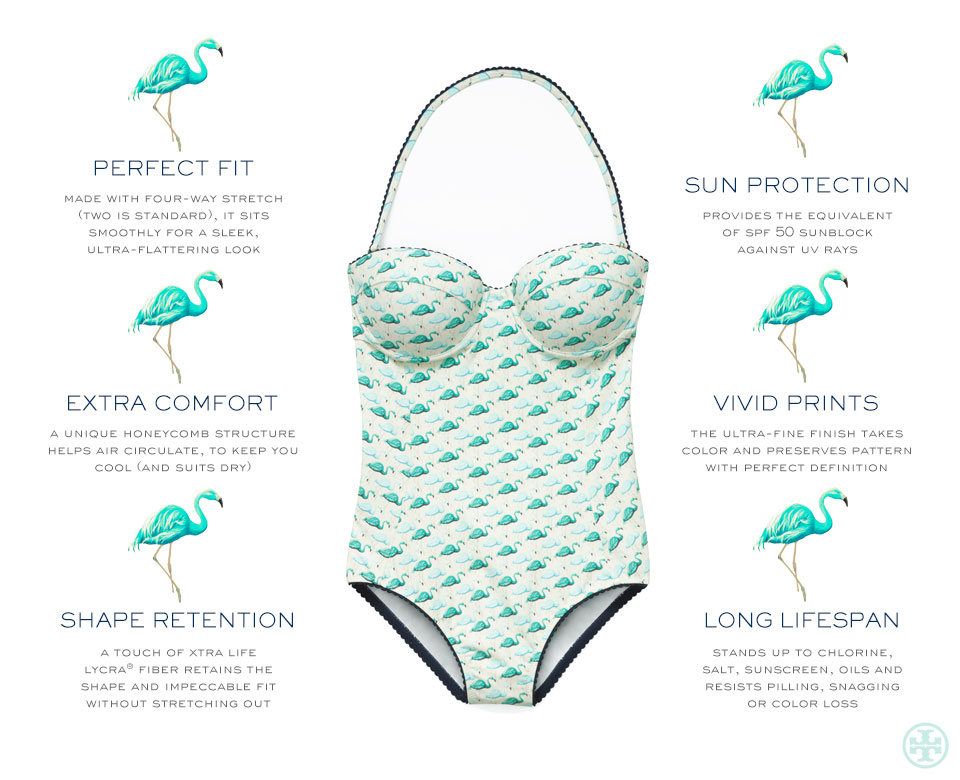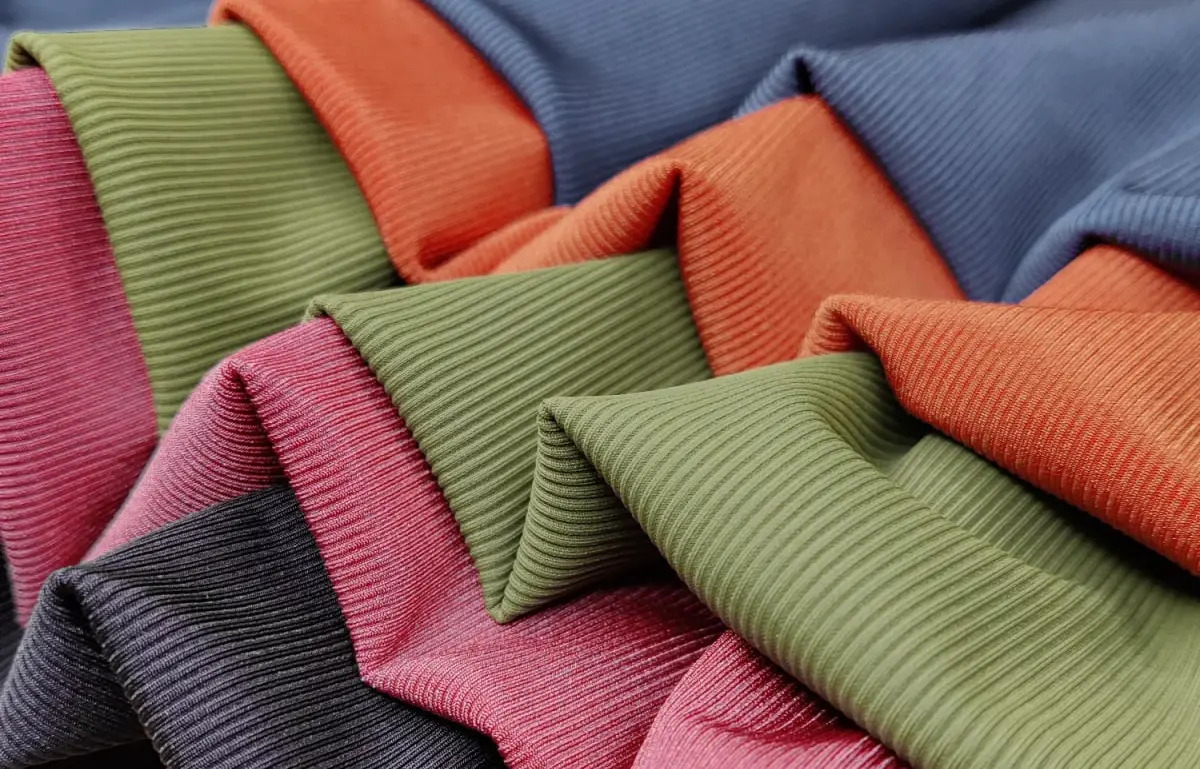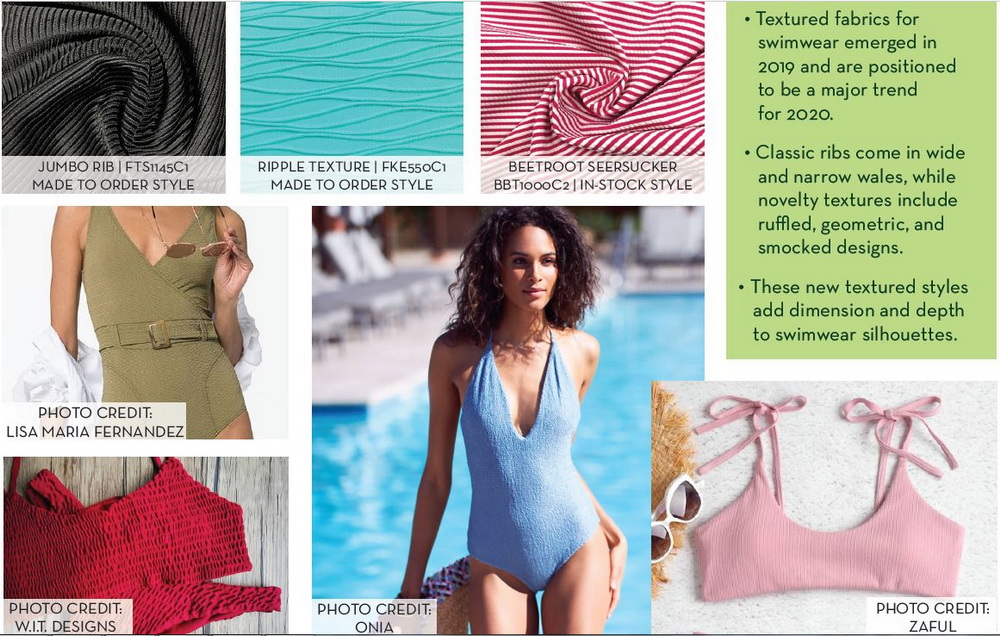Content Menu
● The Evolution of Swimwear Fabrics
● Modern Swimwear Fabrics
>> 1. Nylon
>> 2. Polyester
>> 3. Spandex (Elastane/Lycra)
>> 4. Neoprene
>> 5. Recycled Fabrics
>> 6. Natural and Sustainable Fabrics
● Fabric Blends and Innovations
● Choosing the Right Fabric for Different Types of Swimwear
● Caring for Swimwear Fabrics
● The Future of Swimwear Fabrics
● Video Resources
● Conclusion
● Frequently Asked Questions
>> Q: What is the most common fabric used in swimwear?
>> Q: Are there any natural fabrics suitable for swimwear?
>> Q: How does chlorine affect swimwear fabrics?
>> Q: What fabric is best for competitive swimming?
>> Q: How can I tell if a swimsuit fabric offers UV protection?
Swimwear is an essential part of our wardrobe, especially during the summer months or for those who enjoy water activities year-round. The choice of fabric for swimwear is crucial as it directly impacts comfort, durability, and performance in water. In this comprehensive guide, we will explore the various fabrics used in swimwear, their properties, and why they are chosen for this specific purpose.
The Evolution of Swimwear Fabrics
Before delving into the specific fabrics used today, it's important to understand the evolution of swimwear materials. In the early 20th century, swimsuits were often made from wool or cotton, which were heavy and uncomfortable when wet. As technology advanced, synthetic fibers were introduced, revolutionizing the swimwear industry.

Modern Swimwear Fabrics
Today, swimwear is primarily made from synthetic materials that offer superior performance in water. Let's explore the most common fabrics used in contemporary swimwear:
1. Nylon
Nylon is one of the most popular fabrics used in swimwear. It's a synthetic material known for its strength, durability, and quick-drying properties. Nylon swimwear offers several benefits:
◆ Lightweight and comfortable
◆ Excellent elasticity and shape retention
◆ Resistant to chemicals, including chlorine
◆ Quick-drying
◆ Soft texture
Nylon is often blended with spandex or elastane to enhance its stretch and recovery properties. This combination creates a fabric that hugs the body comfortably and maintains its shape even after repeated use and exposure to water.
2. Polyester
Polyester is another synthetic fabric widely used in swimwear, especially for competitive swimming. Its properties include:
◆ High durability and longevity
◆ Excellent chlorine resistance
◆ UV protection
◆ Quick-drying
◆ Color retention
Polyester swimwear is known for its ability to withstand frequent use and exposure to pool chemicals without degrading. It's also less prone to fading, making it an excellent choice for vibrant, long-lasting swimsuits.
3. Spandex (Elastane/Lycra)
Spandex, also known as elastane or by the brand name Lycra, is a crucial component in most modern swimwear. While it's rarely used alone, it's frequently blended with other fabrics to provide:
◆ Exceptional stretch and recovery
◆ Form-fitting properties
◆ Comfort and flexibility
◆ Shape retention
The addition of spandex to nylon or polyester creates a fabric that moves with the body, providing both comfort and support. Most swimwear contains between 10-25% spandex, with the remaining percentage being nylon or polyester.

4. Neoprene
Neoprene, commonly associated with wetsuits, is also used in certain types of swimwear. Its properties include:
◆ Excellent insulation
◆ Buoyancy
◆ Durability
◆ UV protection
Neoprene swimwear is popular for water sports and activities in colder waters. It provides warmth and protection, making it suitable for surfing, diving, and other demanding water activities.
5. Recycled Fabrics
With increasing environmental awareness, many swimwear brands are turning to recycled fabrics. These materials, often made from recycled plastic bottles or fishing nets, offer similar properties to virgin synthetic fibers while reducing environmental impact. Recycled polyester and nylon are becoming increasingly popular in eco-friendly swimwear lines.
6. Natural and Sustainable Fabrics
While less common, some brands are experimenting with natural and sustainable fabrics for swimwear:
◆ Bamboo: Offers natural UV protection and is biodegradable
◆ Hemp: Durable and naturally resistant to UV rays and mold
◆ Organic cotton: Used in retro-style swimwear, though not ideal for performance
These materials are often blended with synthetic fibers to improve their performance in water.
Fabric Blends and Innovations
Most modern swimwear uses a combination of fabrics to achieve the desired properties. Common blends include:
◆ Nylon-Spandex: Offers a soft feel with excellent stretch and recovery
◆ Polyester-Spandex: Provides durability and chlorine resistance with good elasticity
◆ Nylon-Polyester-Spandex: Combines the benefits of all three materials
Innovations in fabric technology continue to improve swimwear performance. Some advanced features include:
◆ Compression fabrics for competitive swimming
◆ Hydrophobic treatments to reduce water absorption
◆ Antimicrobial finishes to prevent odor and bacterial growth
◆ Heat-tech fabrics for cold water swimming

Choosing the Right Fabric for Different Types of Swimwear
The choice of fabric can vary depending on the type of swimwear and its intended use:
1. Competitive Swimming For competitive swimwear, polyester-spandex blends are often preferred due to their durability, chlorine resistance, and streamlined properties. These fabrics help reduce drag in the water, potentially improving swim times.
2. Recreational Swimwear Nylon-spandex blends are popular for everyday swimwear. They offer comfort, style, and durability for casual swimming and beach wear.
3. Surfing and Water Sports Neoprene or polyester-spandex blends with UV protection are common choices for surfing and other water sports. These fabrics offer protection from the sun and durability against salt water and frequent use.
4. Shapewear Swimsuits For swimsuits designed to shape and support the body, higher percentages of spandex are used, often combined with strategically placed panels of firmer fabric.
5. Children's Swimwear Durable, quick-drying fabrics with UV protection are essential for children's swimwear. Polyester-spandex blends are often used due to their resilience and sun-protective properties.

Caring for Swimwear Fabrics
To ensure the longevity of swimwear, proper care is essential:
1. Rinse swimwear in cold water immediately after use to remove chlorine, salt, or sand
2. Hand wash in cool water with a mild detergent
3. Avoid wringing or twisting the fabric
4. Lay flat to dry, away from direct sunlight
5. Avoid fabric softeners and bleach
6. Rotate between multiple swimsuits to allow each to fully dry between uses
The Future of Swimwear Fabrics
The swimwear industry continues to innovate, focusing on sustainability and performance. Future trends may include:
1. Increased use of recycled and eco-friendly materials
2. Development of biodegradable synthetic fabrics
3. Advanced moisture-wicking and quick-drying technologies
4. Smart fabrics with UV indicators or temperature regulation
As technology advances, we can expect to see swimwear that not only performs better but also has a reduced environmental impact.
Video Resources
For those interested in learning more about swimwear fabrics and construction, here are some helpful video resources:
1. "Swimwear Basics: Everything you need to know about sewing swimwear" This video provides comprehensive information on selecting and working with swimwear fabrics.
2. "How to Choose Swimsuit Fabric" Erin, owner of Tuesday Stitches pattern company, offers valuable insights into selecting the right fabric for your swimwear projects.
3. "Tips to Sew With Spandex - Swimwear Fabric" This video provides practical tips for working with spandex, a key component in most swimwear fabrics.
Conclusion
The world of swimwear fabrics is diverse and constantly evolving. From the traditional nylon and polyester blends to innovative recycled materials, the options for creating comfortable, durable, and stylish swimwear are vast. Understanding the properties of different fabrics can help consumers make informed choices about their swimwear, whether for competitive swimming, casual beach days, or water sports.
As we look to the future, the focus on sustainability and performance will likely drive further innovations in swimwear fabrics. The ideal swimsuit not only fits well and looks great but also withstands the test of time and the elements. By choosing the right fabric, we can ensure that our swimwear meets all these criteria, making our time in and around water more enjoyable.
Frequently Asked Questions
Q: What is the most common fabric used in swimwear?
A: The most common fabric used in swimwear is a blend of nylon and spandex. This combination offers excellent stretch, durability, and quick-drying properties, making it ideal for swimsuits.
Q: Are there any natural fabrics suitable for swimwear?
A: While less common, some natural fabrics can be used for swimwear, including bamboo and hemp. However, these are often blended with synthetic fibers to improve their performance in water. Pure cotton is sometimes used for retro-style swimwear but is not ideal for regular use due to its water absorption properties.
Q: How does chlorine affect swimwear fabrics?
A: Chlorine can be harsh on swimwear fabrics, potentially causing fading, weakening of the fibers, and loss of elasticity over time. Polyester is more resistant to chlorine damage compared to nylon. Many swimwear fabrics are treated with chlorine-resistant finishes to prolong their lifespan.
Q: What fabric is best for competitive swimming?
A: For competitive swimming, polyester-spandex blends are often preferred. These fabrics offer excellent chlorine resistance, maintain their shape, and can be engineered to reduce drag in the water, potentially improving swim times.
Q: How can I tell if a swimsuit fabric offers UV protection?
A: Many swimwear fabrics now come with built-in UV protection. Look for labels that mention UPF (Ultraviolet Protection Factor) ratings. A UPF of 50+ offers excellent protection against harmful UV rays. If this information isn't provided, darker colors and tightly woven fabrics generally offer more UV protection than lighter, loosely woven materials.





































